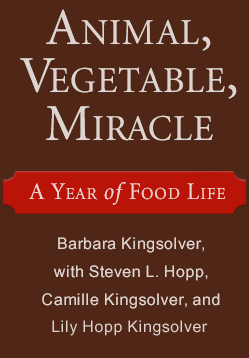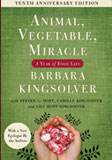Excerpts
from “Smaller Is Better”
Which is more productive, small family farms, or large monoculture industrial farms? It depends on how you ask the question. If we want to know which produces more of a single commodity (like corn) per acre, then large farms win hands down. But small farms rarely try to produce a single crop. If we ask which is more environmentally responsible, sustainable, diverse, healthy, and better connected to the community, both socially and economically, then, well, the big farms lose on all counts.
OK, maybe happier and healthier, but isn’t it all about profits? Aren’t the large farms much more profitable? According to the United States Department of Agriculture, in the 1990s, farms 4 acres or less had an average net income of $1400.00 per acre, compared to less than $40.00 for farms above 1000 acres. In addition, smaller farms were found to have much higher diversity, both of agricultural and non-agricultural species. Smaller farmers are better long-term stewards of the land, use fewer chemical inputs, encourage less soil erosion, and maintain more natural areas for wildlife. Small farms are also better connected to their communities.
Why are smaller farms vanishing? Aside from being much more labor intensive, a major reason is marketing; large supermarkets don’t want to buy bushels of vegetables, they want truckloads. The small operators are required to serve both as farmer and as marketer, selling their products one bushel at a time. What they need are people willing to find their local small farmers and buy directly. Food preference surveys show that a majority of food shoppers are willing to pay more for food grown locally on small family farms. What’s needed are ways for shoppers to readily find sources of local food. Our food buying preferences, and a willingness to pursue them, can make a huge difference in the preservation of an American tradition in farming.
Steven L. Hopp


